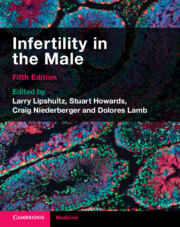Book contents
- Infertility in the Male
- Infertility in the Male
- Copyright page
- Contents
- Contributors
- Foreword
- Abbreviations
- Introduction
- Section 1 Scientific Foundations of Male Infertility
- Section 2 Clinical Evaluation of the Infertile Male
- Section 3 Laboratory Diagnosis of Male Infertility
- Section 4 Treatment of Male Infertility
- Chapter 21 Medical Treatment of Male Infertility
- Chapter 22 Surgery to Improve Sperm Delivery
- Chapter 23 Sperm Retrieval Surgery
- Chapter 24 The Use of Sperm in Medically Assisted Reproduction
- Chapter 25 Male Oncofertility – Considerations for Fertility Preservation and Restoration
- Chapter 26 Male Contraception
- Chapter 27 Future Directions in Male Infertility
- Section 5 Health Care Systems and Culture
- Index
- References
Chapter 24 - The Use of Sperm in Medically Assisted Reproduction
from Section 4 - Treatment of Male Infertility
Published online by Cambridge University Press: 08 July 2023
- Infertility in the Male
- Infertility in the Male
- Copyright page
- Contents
- Contributors
- Foreword
- Abbreviations
- Introduction
- Section 1 Scientific Foundations of Male Infertility
- Section 2 Clinical Evaluation of the Infertile Male
- Section 3 Laboratory Diagnosis of Male Infertility
- Section 4 Treatment of Male Infertility
- Chapter 21 Medical Treatment of Male Infertility
- Chapter 22 Surgery to Improve Sperm Delivery
- Chapter 23 Sperm Retrieval Surgery
- Chapter 24 The Use of Sperm in Medically Assisted Reproduction
- Chapter 25 Male Oncofertility – Considerations for Fertility Preservation and Restoration
- Chapter 26 Male Contraception
- Chapter 27 Future Directions in Male Infertility
- Section 5 Health Care Systems and Culture
- Index
- References
Summary
Medically assisted reproduction (MAR) procedures require the processing of semen and sperm samples. There are several variables which can affect the quality of spermatozoa during the processing of sperm cells, which can, in turn, influence the outcomes of embryo development, pregnancy, and live births [1]. The objective of this chapter is to describe the various techniques utilized for processing human sperm in order to enrich for the best and most competent sperm used for MAR, including intrauterine insemination (IUI), in vitro fertilization (IVF), and intracytoplasmic sperm insemination (ICSI) [2, 3].
- Type
- Chapter
- Information
- Infertility in the Male , pp. 446 - 460Publisher: Cambridge University PressPrint publication year: 2023

